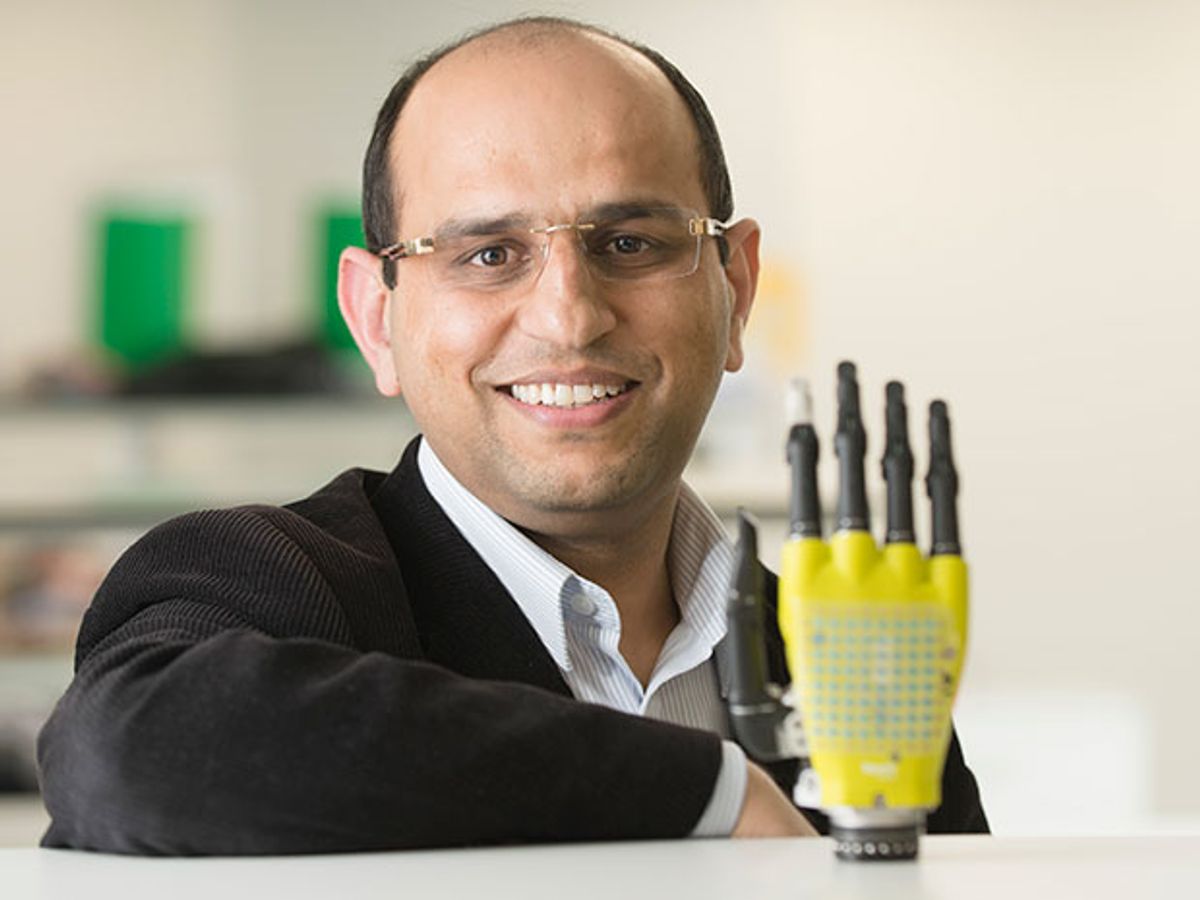Cochlear implants can restore hearing to individuals with some types of hearing loss. Retinal implants are now on the market to restore sight to the blind. But there are no commercially available prosthetics that restore a sense of touch to those who have lost a limb.
Several products are in development, including this haptic system at Case Western Reserve University, which would enable upper-limb prosthetic users to, say, pluck a grape off a stem or pull a potato chip out of a bag. It sounds simple, but such tasks are virtually impossible without a sense of touch and pressure.
Now, a team at the University of Glasgow that previously developed a flexible ‘electronic skin’ capable of making sensitive pressure measurements, has figured out how to power their skin with sunlight. That renewable energy could be used to power an array of sensors to add feeling to an artificial limb, the authors describe this month in Advanced Functional Materials.
“Rather than just talking about flexibility or distributed sensors, we’re talking about functional things, and one of those is energy,” says study leader Ravinder Dahiya, who leads the Bendable Electronics and Sensing Technologies (BEST) group at Glasgow. “Can we develop electronic skin that has its own energy?”
The new skin is made of a single layer of graphene—a strong, flexible material composed of a single-atom-thick sheet of carbon—atop a photovoltaic cell. Graphene is not only electrically conductive, it is transparent, so 98% of the light that strikes it can seep through to the photovoltaic cell underneath. The graphene is covered with a transparent protective layer.
The team tested their device on a prosthetic hand. When the skin patches on the skin were enabled, the prosthetic could touch and grab soft objects like a normal hand. But when the skin was not turned on, the hand crushed the objects.
The skin requires just 20 nanowatts of power per square centimeter, according to the paper. Right now, the energy captured by the photovoltaic cells has to be used immediately, but the team has another prototype in development that includes flexible supercapacitors to store excess energy.
They are also working on scaling up the material to cover larger areas of a prosthetic or robot, using a method the team pioneered in 2015 for inexpensively producing large sheets of graphene. Dahiya expects the skin will eventually be produced for just $1 for 5 to 10 centimeters of the material.
The solar-powered skin could also be used in wearable electronics for health monitoring, Dahiya notes. With a different set of sensors, the sun-powered material could be used for biosensing, such as monitoring blood glucose in individuals with diabetes. “If you go to remote areas where there is no power, you can see the benefit of this research to monitor health conditions,” he adds.
Megan is an award-winning freelance journalist based in Boston, Massachusetts, specializing in the life sciences and biotechnology. She was previously a health columnist for the Boston Globe and has contributed to Newsweek, Scientific American, and Nature, among others. She is the co-author of a college biology textbook, “Biology Now,” published by W.W. Norton. Megan received an M.S. from the Graduate Program in Science Writing at the Massachusetts Institute of Technology, a B.A. at Boston College, and worked as an educator at the Museum of Science, Boston.



